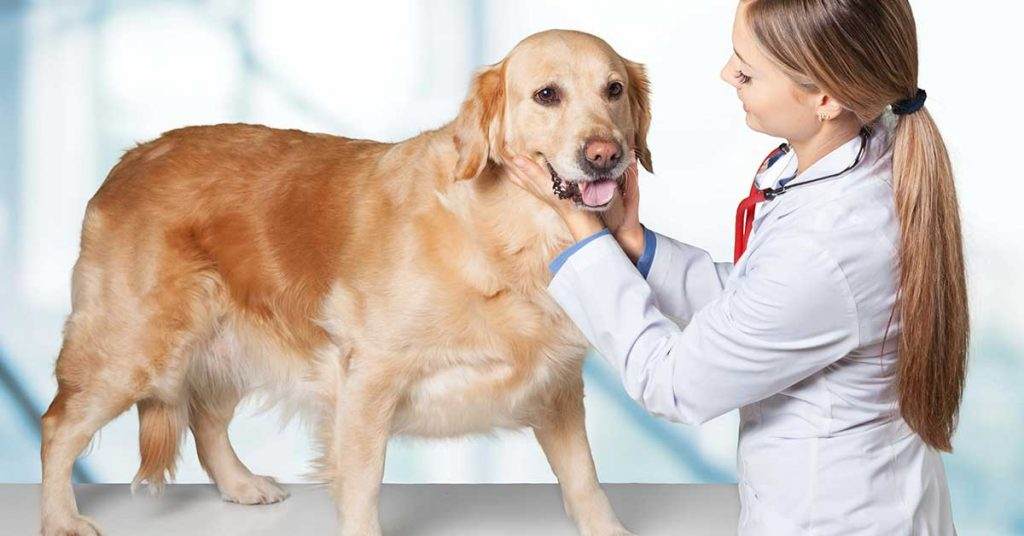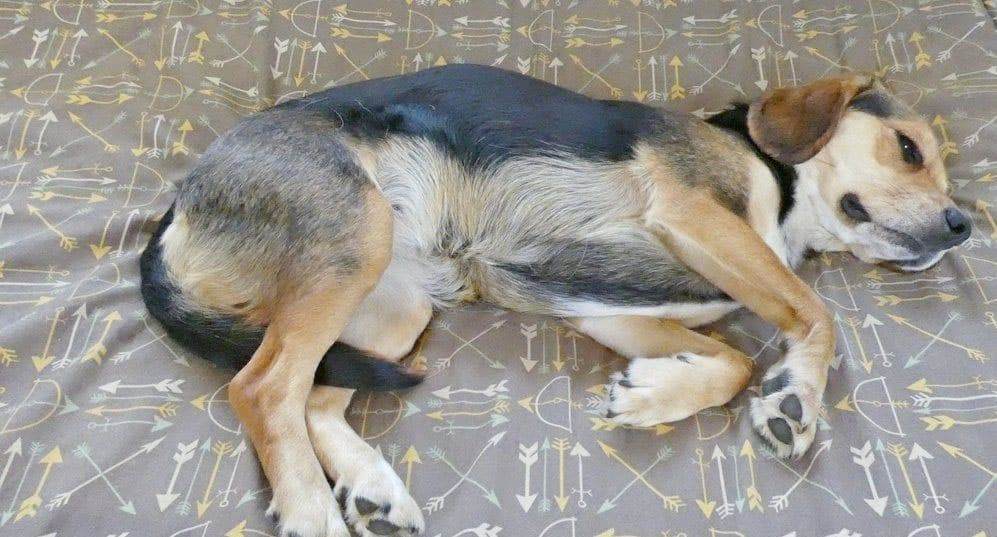
Labradors are one of the most beloved dog breeds in the world. They are adored for their friendly and lovable temperament and playful nature. Labradors do suffer from the common genetic condition of dwarfism.
Due to a slowed bone growth rate, the Labrador suffering from this condition is smaller than its healthy counterparts. Their limbs are usually shorter and disproportionate to the rest of their body. Dwarf Labradors are fairly common, although people often fail to notice the condition.
What is Dwarfism in Labradors?

Dwarfish is a specific genetic condition in Labradors which produces Labs smaller than the usual size. Dwarfism in some Labradors is easily recognizable while in others it may not be readily noticeable. The shorter legs become conspicuous only when observed closely.
There are two kinds of dwarfisms that can affect Labradors. These two variants of the conditions are results of different genetic mutations. When two recessive dwarfism genes are passed on from the parents to the Labrador pup, it suffers from the condition and its allied ailments. Dwarfism manifests in Labradors with certain pronounced health problems.
The Standard Size of a Labrador
An average male Labrador retriever measures around 22.5-24.5 inches, while a female of the breed measures around 21.5-23.5 inches. Labradors that are shorter than this height range are said to suffer from dwarfism.
Causes of Dwarfism in Labradors

As a genetic condition, dwarfism occurs when the regressive gene is passed on from the parent to the Lab offspring. Dwarfism in Labrador can be caused due to the inheritance of the SD1 or the SD2 gene. Both these forms of dwarfisms affect the Labrador’s legs. The former is known as Osteochondrodysplasia and the latter is known as skeletal dysplasia.
Each kind produces different effects on the pup. Dwarfism caused by the SD1 gene mutation produces bent legs in the Lab, while SD2 causes the legs to be shorter than usual. The growth of bones and cartilages is slowed by the SD1 gene, causing severe malformation of the legs.
The SD2 gene’s effect is a little more difficult to identify as the legs are shorter, but the body of the Lab corresponds to a normal length and width. This gene affects the bones, hampering their unrestricted growth. The gene linked to the first form of dwarfism also results in eye and joint ailments and complications.
Pituitary gland malfunction can also cause dwarfism in Labradors. Hypopituitarism leads to the insufficient production of the growth hormone in some Labradors, resulting in dwarfism.
Sometimes the pituitary gland may remain underdeveloped leading to dwarfism. In both cases, the gland is unable to regulate the growth hormone and hence, the body of the Lab remains smaller than others. Pituitary dwarfism is also an inherited condition.
Hypothyroidism can also cause dwarfism in Labradors as their thyroid gland also suffers from insufficient hormone production. The most commonly identified cause of dwarfism in the breed remains the SD2 gene mutation.
Symptoms of Dwarfism in Labradors

Sometimes dwarfism may be all too obvious and conspicuous in Labradors, while occasionally it may be easily overlooked. The expression of dwarfism in Labradors varies from one individual dog to another, however, there are certain commonly known symptoms of dwarfism in Labradors.
Short legs are one of the main physical manifestations of the condition. The length of the legs in a dwarf Labrador is smaller than that of its normal counterparts. However, one must be careful while assessing the Labrador’s leg size, as the legs of an English Labrador are genetically shorter than those of the American variety. It is thus, important to look for other symptoms of dwarfism to confirm the diagnosis.
Swollen and enlarged knee joints, feet turned inward, bowed forelimbs are all symptoms of dwarfism. Dwarf Labradors also have abnormally shaped large heads. An unusually large head can lead to breathing difficulties in Labs suffering from the condition.
Slow development of dentures may be a symptom of pituitary dwarfism in Labradors. Hair loss in patches is also a symptom of this type of dwarfism.
Improper genital development in male Labradors is another symptom that occurs due to the lack of growth hormones. Hyperpigmentation, scales and wrinkles on the skin are common symptoms of pituitary dwarfism.
Health Problems Associated With Dwarfism

Dwarf Labradors commonly suffer from several serious health issues. Labradors suffering from the condition often have difficulty walking or moving due to extreme pain in their malformed joints. Movement may severely strain the Lab’s skeletal structure.
Knee and hip joint problems are common among such dogs. Dwarf Labradors are highly prone to suffering from various eye infections and ailments. They have a high predisposition toward contracting infections.
Problems of the spinal cord are common among these dogs due to their malformed skeletal structure. Their disproportionate bodies may lead to breathing problems and frequent panting. Most Labradors born with this condition are sterile. However, if they are not, special assistance is needed to help deliver the offspring.
Tests to Confirm Dwarfism in Labradors

Blood tests are advisable if you notice symptoms in your Lab. X-rays of the limbs and other joints are taken to analyze the bone structure abnormalities to successfully diagnose Dwarfism. When buying a Labrador pup, ensure that its parents are tested for dwarfism.
Make sure that the breeder shares the parents’ health test results with you. The SD2 test will confirm the presence of the gene in a Lab. Labradors with this gene should never be bred with another Lab with the same recessive gene, as the offspring will have the gene in the dominant form and suffer from the condition.
Treating the Condition

Selecting the correct course of treatment depends on the severity of the condition and the age of the dog when the condition is identified. The joint pain caused by the condition can be treated with palliative medication and anti-inflammatories. Medicines can also be prescribed by the vet to correct the hormonal deficiencies causing dwarfism.
Sometimes hormonal injections are also administered to correct this deficiency. This is a viable option only when the condition is identified at a young age. However, if no significant discomfort is experienced by your Lab, it is better not to intervene medically with the condition. Interventions are only necessary when the dog experiences pain and discomfort.
Right Way to Care for a Dwarf Labrador
Apart from the regular care routine that Labradors require, one with this condition needs extra care and love. Frequent check-ups are necessary to monitor the condition and its symptoms. A well-balanced, nutrient-rich diet- right from puppyhood- is vital to try and reduce the ill-effects of the condition.
Nutrient supplements are important for their joints. If your dog suffers from the condition, consult a vet immediately when it begins showing signs of discomfort like stiffness, lethargy, breathing difficulty or limping.
As dogs suffering from the condition are prone to breathing problems, it is best to avoid intense exercise routines as well as choke chains. Harnesses are better choices for such dogs. Owners should strictly follow the advice of the vet and the recommended routine for the dog.
Any changes in medicine dosages or activity levels must first be consulted and ratified by the vet. Most dogs suffering from this condition are sterile, however, if not, the vet may advise neutering the dog to prevent breeding.

Labradors suffering from the condition can lead fairly happy and normal lives, engaging in playful activities like their healthy counterparts. It is only in certain severe cases, that the lifespan of the dog is significantly reduced.
Small and Miniature Labradors
There may be Labradors that are relatively smaller than the rest of the litter. They do not necessarily suffer from dwarfism, but simply fall on the lower end of the normal height and weight spectrum. The important thing to remember is to get the pup tested for the condition if you suspect it.

Miniature Labradors on the other hand are popularized by breeders with multiple names like cupcake Labradors, canoe Labs, toy Labs, etc. These dogs are almost 10-20 pounds lighter and 2-6 inches shorter than the breed standard. They are not Labs that suffer from dwarfism as such a drastic difference in height and weight is not common even in the case of dwarf Labs.
These dogs may be a result of crossbreeding a Lab and a smaller dog or they may be produced of breeding two smaller Labs. However, miniature Labs are very different from Labs that suffer from dwarfism. Miniature Labs are not recognized by the American Kennel Club.
Deterring Dwarfism in Labradors

Breeders should never breed two Labs with the recessive SD2 gene as this results in the offspring being born with the condition. They should test Labradors for the dwarf gene before breeding. Inbreeding should be avoided at all costs to prevent this condition.
Always check the health history and tests of the parents before buying a Labrador pup. The best way to avoid the condition is to ensure a healthy pup. Pay special attention to the health and wellbeing of the pup.
Examine for signs and symptoms of the condition. Early diagnosis can help in treating the condition promptly and prevent the symptoms from aggravating.
Table of Contents





